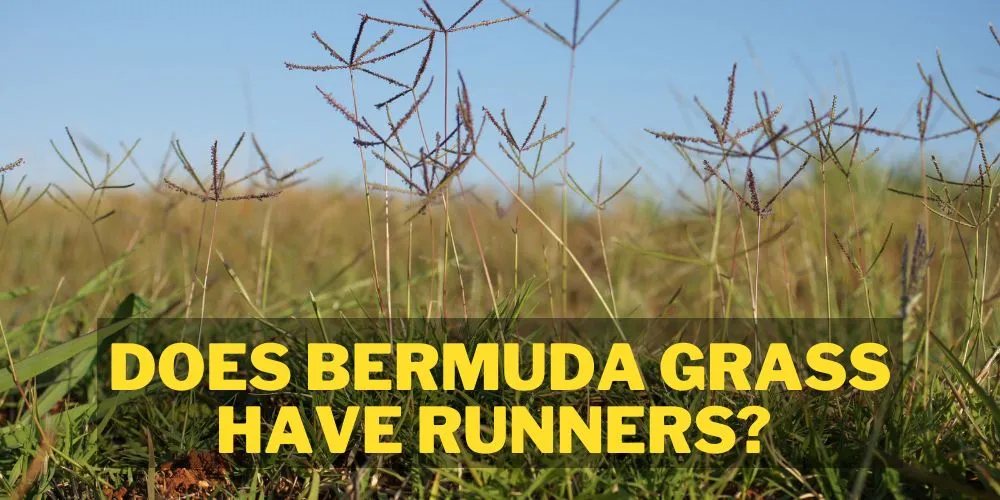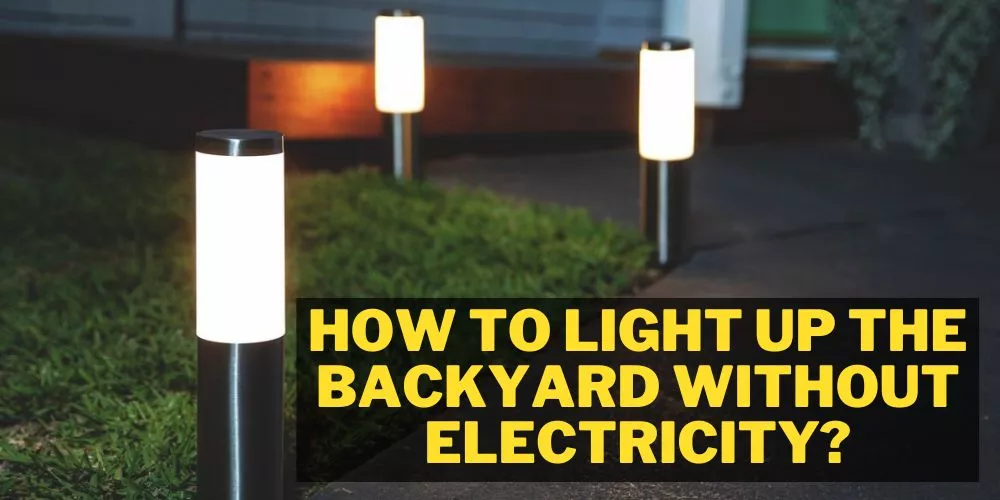Choosing the right material under the fire pit is crucial for safety reasons. Materials like concrete, pavers, gravel, and natural stone are commonly used. Concrete is fire-resistant, but it can crack due to extreme heat.
Pavers are durable and easy to replace but can shift over time. Gravel helps with drainage but can cause sparks. Natural stone is a popular option due to its heat-resistant properties but it can be expensive. Ultimately, the right material depends on your budget, location, and preference.
What to put under fire pit?
The best thing to put under a fire pit is a heat-resistant base, such as a fire pit pad, bricks, or pavers. These materials are designed to withstand high temperatures and protect the area below the fire pit from damage. They also provide a stable foundation for the fire pit, ensuring it doesn’t tip over or shift during use.
One popular option is a fire pit pad, typically made from a heat-resistant material like volcanic rock or fiber cement. These pads are designed to be placed directly on the ground, providing a protective barrier between the fire pit and any combustible materials below. They also come in various sizes and shapes to fit different fire pit designs and can often be easily transported for use at different locations.
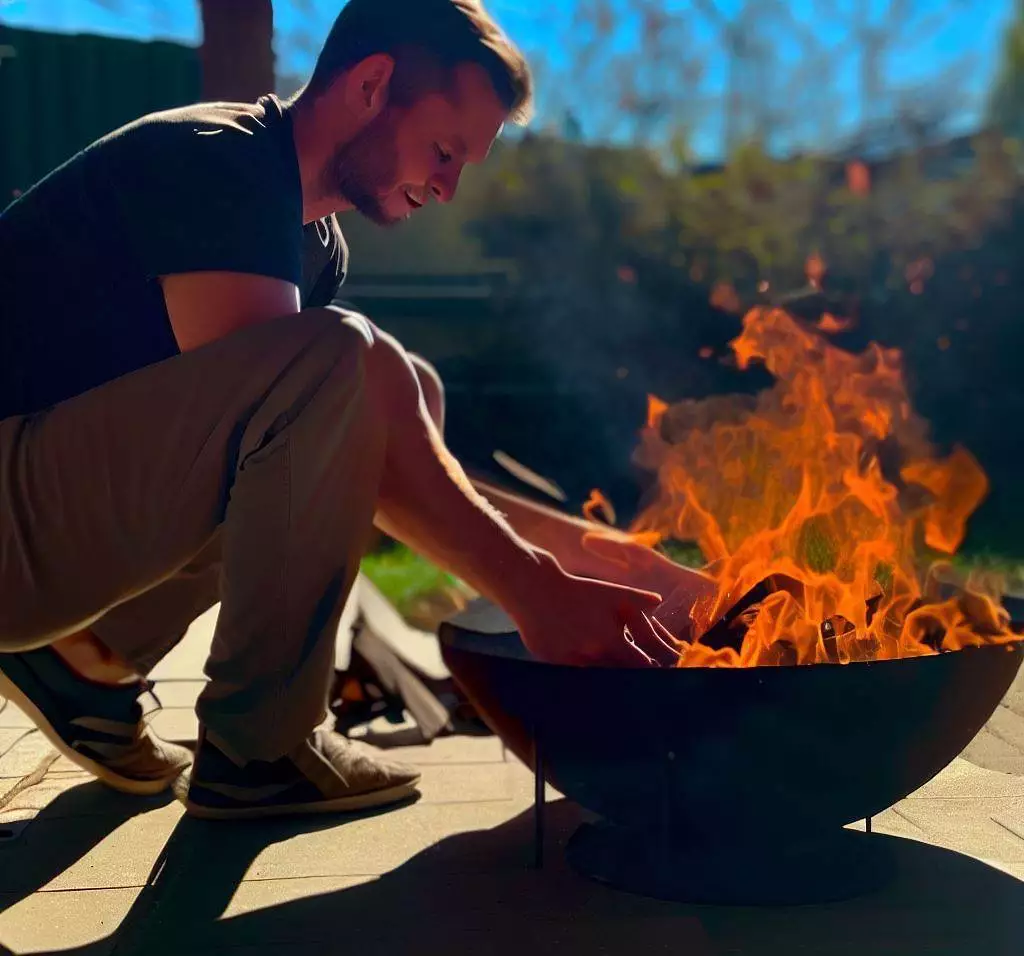
Bricks and pavers are also a good choice for a fire pit base, as they are durable and heat-resistant. They can be arranged in various patterns to create a visually appealing base for the fire pit. Additionally, they are easy to replace if they become damaged over time.
Overall, using a heat-resistant base is the best option for ensuring the safety and longevity of your fire pit, as it protects the surrounding area and provides a stable foundation.
Materials that can be used under a fire pit
1. Concrete or Pavers
Concrete or pavers are two of the most popular materials used for fire pits. They’re durable and long-lasting, making them a great investment for your backyard.
Concrete is a popular choice because it can be easily shaped into any design you want and is also fire-resistant. To lay a concrete fire pit, you’ll need to dig a hole slightly larger than your fire pit, then mix and pour the concrete into the hole. Once the concrete is set, add your fire pit on top.
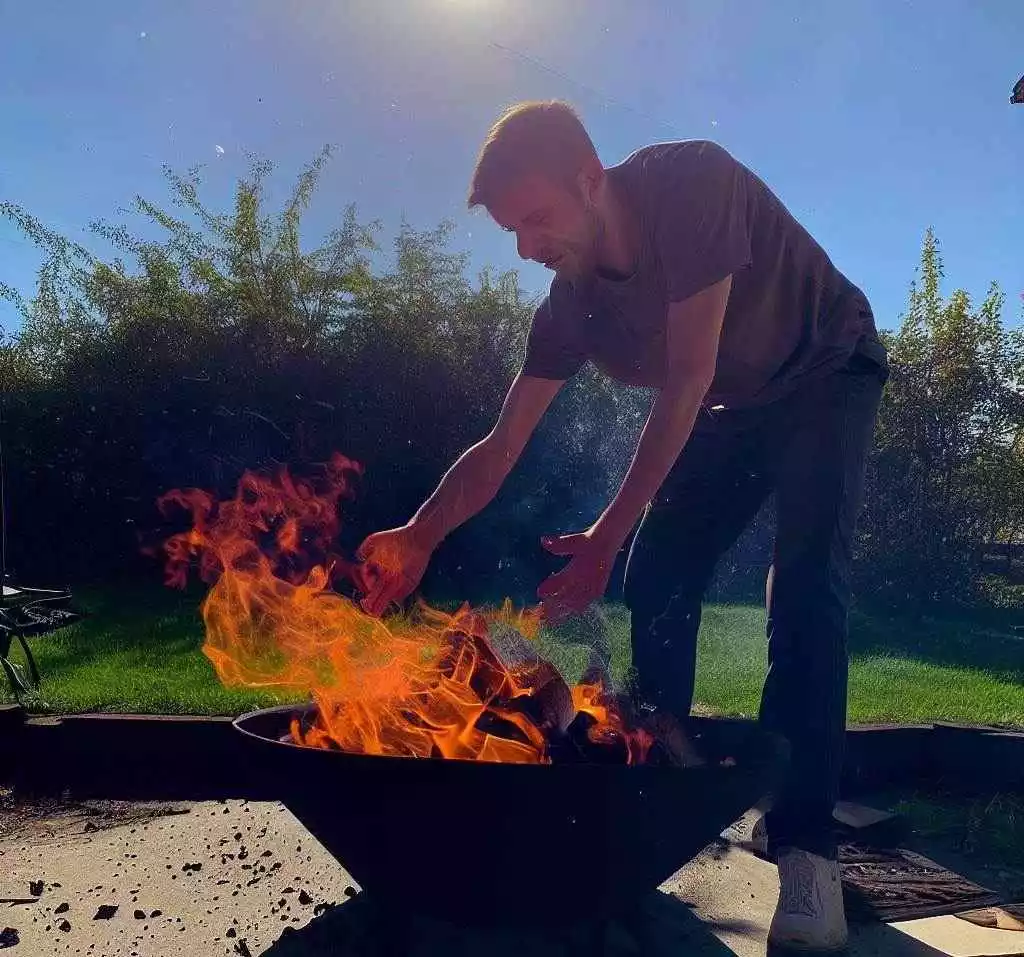
Pavers are another option for your fire pit base. They’re easy to install and come in various colors and styles, so you can choose something that fits your backyard aesthetic. To lay pavers, you’ll first need to excavate the area to the desired depth and level the ground. Then, you can lay a layer of sand or gravel before placing the pavers on top. Make sure everything is level before adding your fire pit on top.
2. Gravel or Crushed Stone
..Gravel or crushed stone is a great choice for a fire pit base because it’s affordable and easy to find. It’s also permeable, so water can easily drain through it, preventing standing water from accumulating around your fire pit.
To lay gravel or crushed stone for your fire pit, you’ll first need to excavate the area to the desired depth and level the ground. Then, you can add a layer of landscape fabric to help prevent weeds from growing through the gravel. Lastly, add a gravel or crushed stone layer on top and level everything out before placing your fire pit on top.
One thing to remember with gravel or crushed stone is that it may shift over time with frequent use, so you may need to replenish the base layer periodically.
3. Fire Pit Pads
Fire pit pads are specially designed mats placed underneath a fire pit to protect the surface from heat damage. They are typically made from a heat-resistant material like fiberglass or silicone and come in various sizes and shapes to fit different fire pit designs.
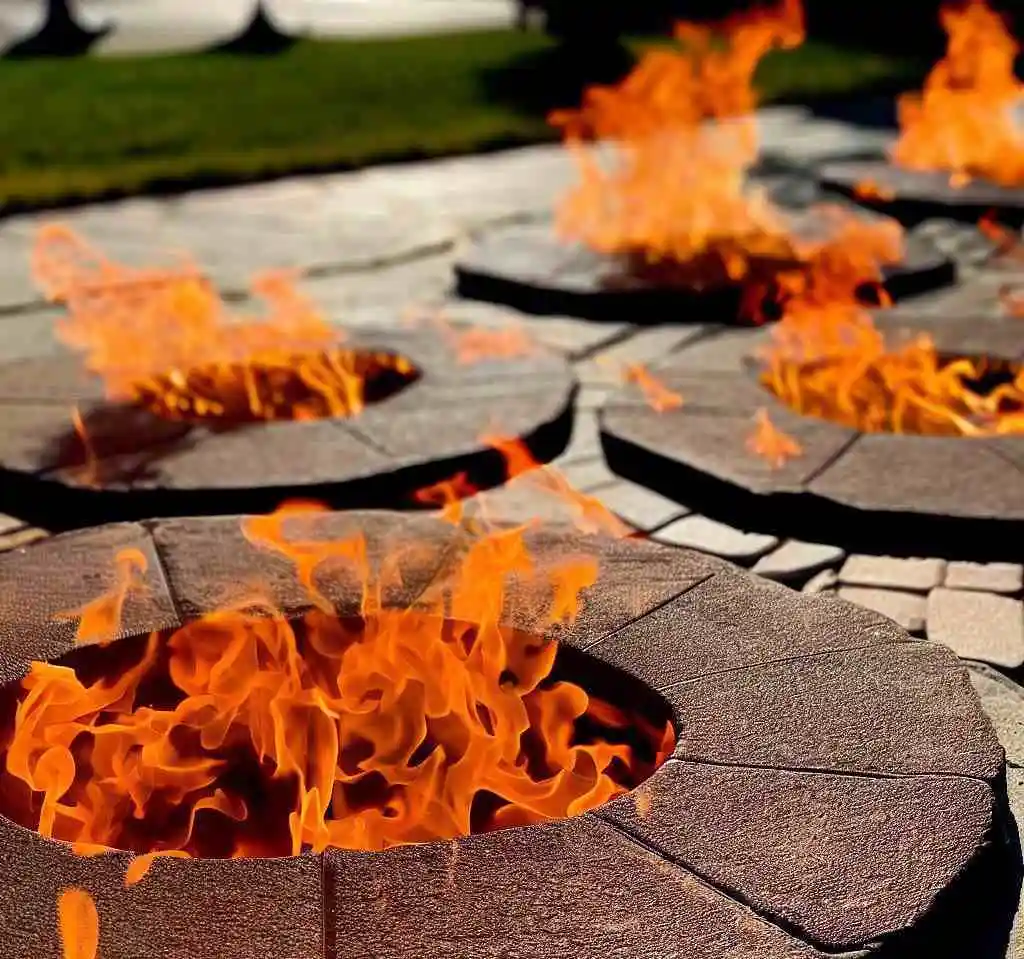
The benefits of using a fire pit pad include the following:
- Protecting your deck or patio from scorch marks or discoloration.
- Preventing grass or other landscaping from catching fire.
- Making it easier to clean up ash and debris after your fire.
They can also make your fire pit more stable and level on uneven surfaces.
To use a fire pit pad, simply place it on the ground or surface where you plan to use your fire pit. Ensure the pad is large enough to cover the entire area where the fire will be. When you’re done using your fire pit, let it cool down completely before removing the pad for storage or cleaning.
4. Natural Materials
Natural materials like rocks, stones, and bricks often create a rustic, natural-looking fire pit. These materials can be gathered from your backyard or purchased from a landscaping or home improvement store.
Some benefits of using natural materials for your fire pit include their durability and resistance to heat damage, as well as their ability to blend in with the surrounding environment. They can also create a custom design that fits your style.
However, there are some downsides to using natural materials. They can be heavy and difficult to move, making it hard to adjust the placement of your fire pit.
They can also be more expensive than other materials, depending on the type and quality of your chosen material. Additionally, natural materials may require more maintenance than other options, as they can be prone to cracking or deteriorating over time.
Factors to consider when choosing a material to put under fire pit
When considering what material to put under a fire pit, there are several important factors to remember. These include the size and shape of the fire pit, the location of the fire pit, local regulations and fire codes, and personal preference and style.
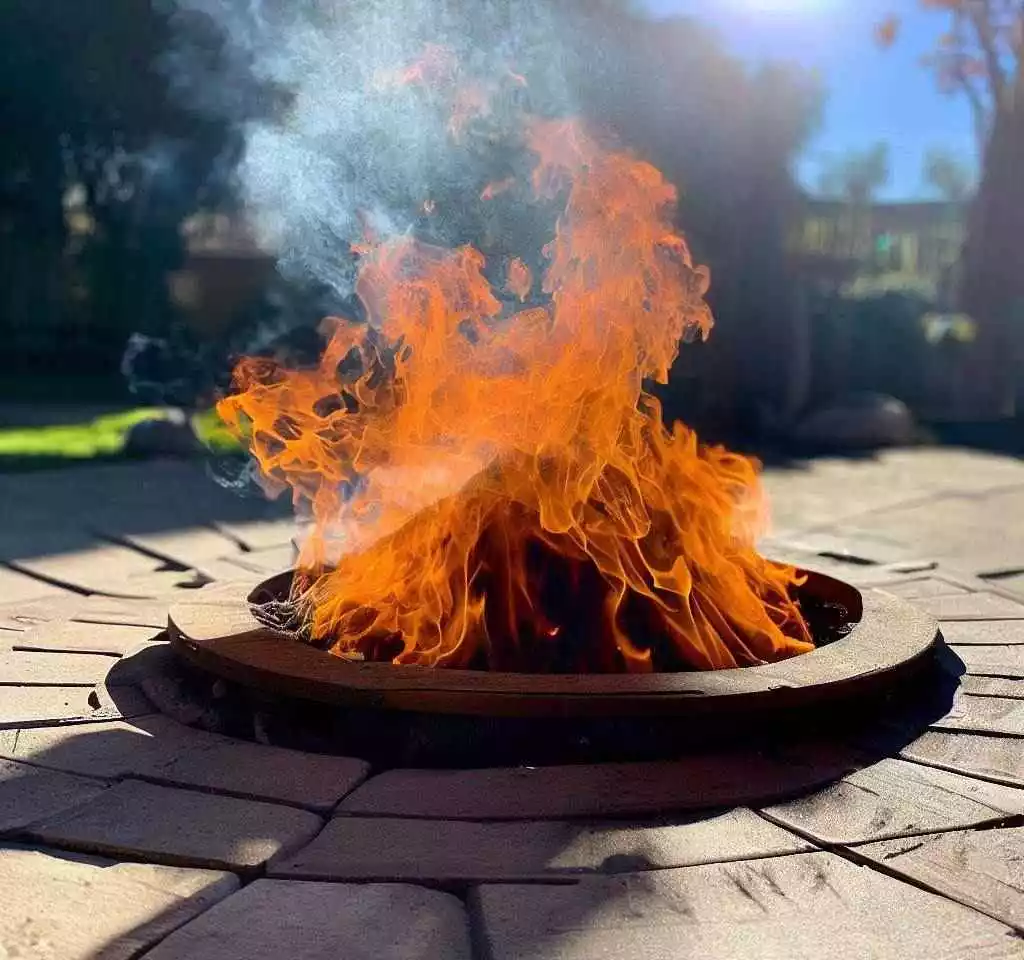
Size and Shape of the Fire Pit
The size and shape of your fire pit will play a big role in determining what type of material to use underneath it. A larger fire pit will require a more substantial base, while a smaller fire pit may be able to get by with a lighter material. Additionally, the shape of the fire pit will also play a role in determining what type of material to use. For example, if the fire pit is round, you may want to consider using a circular base, such as a fire pit pad or circular pavers.
Location of the Fire Pit
Another important factor to consider when choosing a material to put under your fire pit is the location of the fire pit. If the fire pit is located on a patio or other hard surface, you may want to consider using a heat-resistant base, such as a fire pit pad, to protect the surface underneath. On the other hand, if the fire pit is located on grass or another soft surface, you may get by with a lighter material, such as gravel or crushed stone.
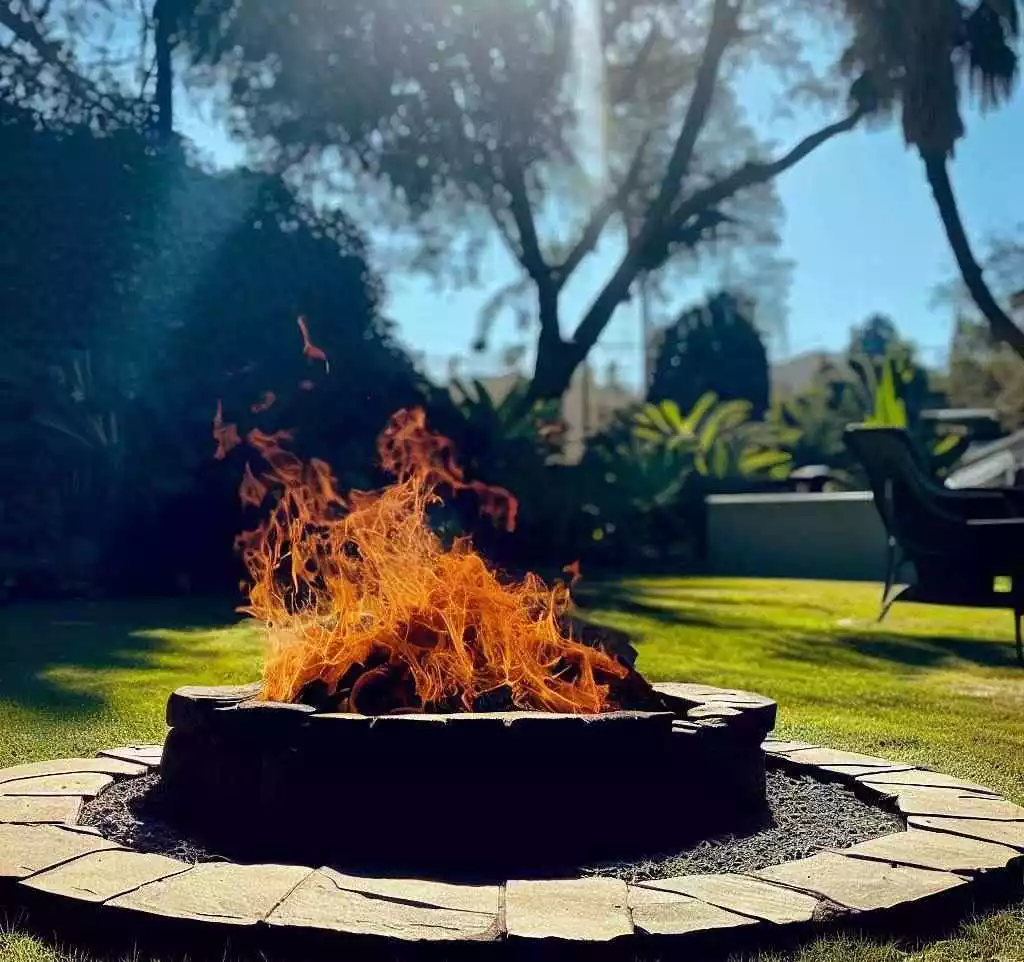
Local Regulations and Fire Codes
It’s important to check your local regulations and fire codes before installing a fire pit. Some areas may have specific requirements for what type of material can be used underneath a fire pit or may prohibit the use of fire pits altogether. Additionally, some areas may require permits or inspections before installing a fire pit. Do your research and follow all local regulations and fire codes to ensure your fire pit is safe and legal.
Personal Preference and Style
Finally, personal preference and style are important factors when choosing a material to put under your fire pit. Some people may prefer the look of natural materials, such as stones or logs, while others may prefer the clean, modern look of concrete or pavers. Ultimately, the material you choose should reflect your style and complement the overall design of your outdoor space.
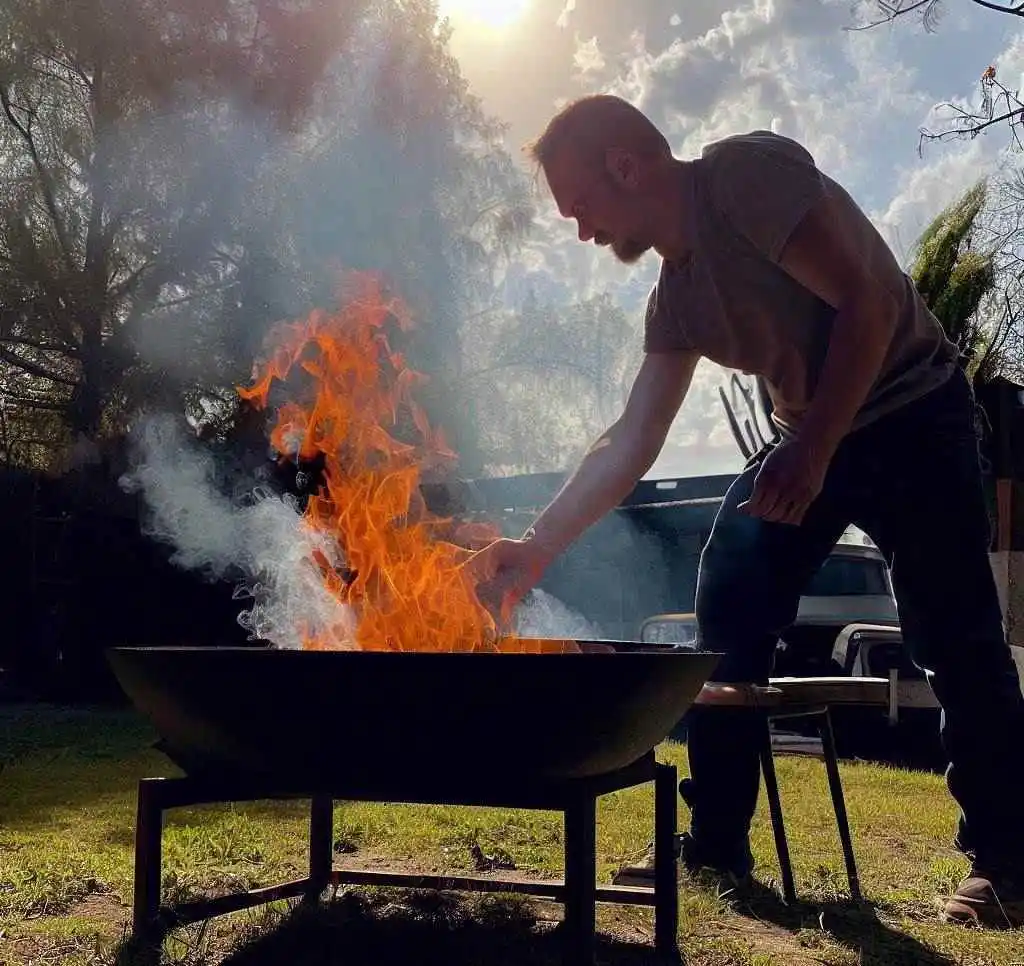
In summary, when choosing a material to put under a fire pit, it’s important to consider the fire pit’s size and shape, the fire pit, location of the fire pit, local regulations and fire codes, and personal preference and style. By taking these factors into account, you can choose a material that is both safe and aesthetically pleasing.
You May Also Find Useful: Is Honey Locust Good Firewood? | Is Sycamore Good for Firewood?
Frequently Asked Questions (FAQs)
Q: Should I put something under my fire pit?
A: Yes, it’s recommended to put something under your fire pit to protect the surface underneath from heat damage. There are many options for fire pit bases, including concrete, pavers, gravel, and fire pit pads.
Q: What can you put under a fire pit so it doesn’t burn the grass?
A: If your fire pit is going to be located on grass or another soft surface, you may want to consider using a heat-resistant base, such as a fire pit pad, to protect the surface underneath. Another option is to create a raised platform using bricks or concrete blocks to elevate the fire pit off the ground.
Q: What is the best base for a fire pit?
A: The best base for a fire pit will depend on factors such as the size and shape of the fire pit, the location of the fire pit, local regulations and fire codes, and personal preference and style. Some popular options for fire pit bases include concrete, pavers, gravel, and fire pit pads.
Q: Can you put a fire pit on the pavers?
A: Yes, you can put a fire pit on the pavers. However, choosing a heat-resistant material that can withstand high temperatures without cracking or melting is important. You may also want to consider using a fire pit pad or other heat-resistant bases to protect the pavers underneath.
Q: Should you put mulch or gravel around a fire pit?
A: Putting mulch around a fire pit is not recommended, as it can be a fire hazard. Mulch is flammable and can easily catch fire if sparks or embers land on it. On the other hand, Gravel can be a good option for a fire pit base or for creating a border around the fire pit. Just be sure to choose a heat-resistant material that can withstand the high temperatures of a fire pit.
Conclusion:
In conclusion, choosing the right material to put under your fire pit is an important decision that can impact your outdoor space’s safety and aesthetics. Consider factors such as the size and shape of the fire pit, the location of the fire pit, local regulations and fire codes, and personal preference and style. Whether you choose concrete, pavers, gravel, or a fire pit pad, follow all safety guidelines and local regulations to ensure that your fire pit is safe and enjoyable for years to come. I hope, I have been able to answer your question “what to put under fire pit?” clearly.

